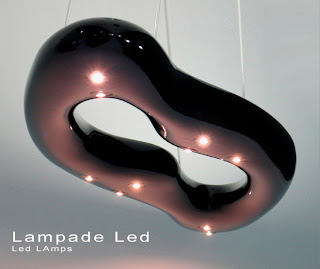
seem off topic, but I think the savings to all interests, following unpiccolo text explaining the benefits of LED technology:
If designed properly, an LED circuit has 80% efficiency, which means that 80% of the electricity is converted into light energy.
The future of household lamps will soon be the widespread adoption and use of white LED bulbs. Although the current market for finished products White LEDs are targeted mainly for enthusiasts and early adopters, efficiency and cost effectiveness of LED lighting systems to stimulate demand for more affordable LED lights. Opto-electronics is an interesting area and it is expected that in the near future, white LED lighting applications will be powerful and cheap enough to replace incandescent lighting for everyday use in our homes, street lights, outdoor signs, and offices.
Advantages of LED lights
The operational life of current white LED lamps is 100,000 hours. This is 11 years of continuous service, or 22 years of 50%. The long working life of an LED lamp is a stark contrast to the average lifespan of an incandescent bulb, which is about 5000 hours. If the lighting device must be embedded in an inaccessible place, with LEDs would virtually eliminate the need for replacement lamps routine.
There is no comparison between the cost of LED lights vs. traditional incandescent options. With incandescent bulbs, the real cost of the bulb is the replacement cost of bulbs and the cost for the work and time required to replace them. These factors are important, especially where there are a large number of lamps installed. For office buildings and skyscrapers, maintenance costs for the replacement bulbs can be enormous. These problems can be virtually eliminated with the LED option.
The strength of LED lighting is reduced power consumption. If designed properly, an LED circuit approach 80% efficiency, the which means that 80% of the electricity is converted into light energy. The remaining 20% \u200b\u200bis lost as heat. Compare that with incandescent bulbs that operate at about 20% efficiency (80% of electricity is lost as heat). In terms of real money, if a 100 watt incandescent bulb is used for 1 year at a cost of electricity of 10 cents per kilowatt hour, 88 dollars will be spent on energy costs. Spending $ 88, $ 70 will be used to heat the room, not the light of the room. If a 80% efficient LED system was used, the cost of electricity would be $ 23 a year - would save $ 65 on electricity during the year. Realistically, the cost savings would be higher as most incandescent bulbs Blow Out within a year and require replacements whereas LED light bulbs can be easily used for a decade without running out.
I found these lamps really beautiful:
Pulsar LED lamps
The future of household lamps will soon be the widespread adoption and use of white LED bulbs. Although the current market for finished products White LEDs are targeted mainly for enthusiasts and early adopters, efficiency and cost effectiveness of LED lighting systems to stimulate demand for more affordable LED lights. Opto-electronics is an interesting area and it is expected that in the near future, white LED lighting applications will be powerful and cheap enough to replace incandescent lighting for everyday use in our homes, street lights, outdoor signs, and offices.
Advantages of LED lights
The operational life of current white LED lamps is 100,000 hours. This is 11 years of continuous service, or 22 years of 50%. The long working life of an LED lamp is a stark contrast to the average lifespan of an incandescent bulb, which is about 5000 hours. If the lighting device must be embedded in an inaccessible place, with LEDs would virtually eliminate the need for replacement lamps routine.
There is no comparison between the cost of LED lights vs. traditional incandescent options. With incandescent bulbs, the real cost of the bulb is the replacement cost of bulbs and the cost for the work and time required to replace them. These factors are important, especially where there are a large number of lamps installed. For office buildings and skyscrapers, maintenance costs for the replacement bulbs can be enormous. These problems can be virtually eliminated with the LED option.
The strength of LED lighting is reduced power consumption. If designed properly, an LED circuit approach 80% efficiency, the which means that 80% of the electricity is converted into light energy. The remaining 20% \u200b\u200bis lost as heat. Compare that with incandescent bulbs that operate at about 20% efficiency (80% of electricity is lost as heat). In terms of real money, if a 100 watt incandescent bulb is used for 1 year at a cost of electricity of 10 cents per kilowatt hour, 88 dollars will be spent on energy costs. Spending $ 88, $ 70 will be used to heat the room, not the light of the room. If a 80% efficient LED system was used, the cost of electricity would be $ 23 a year - would save $ 65 on electricity during the year. Realistically, the cost savings would be higher as most incandescent bulbs Blow Out within a year and require replacements whereas LED light bulbs can be easily used for a decade without running out.
I found these lamps really beautiful:
Pulsar LED lamps
0 comments:
Post a Comment